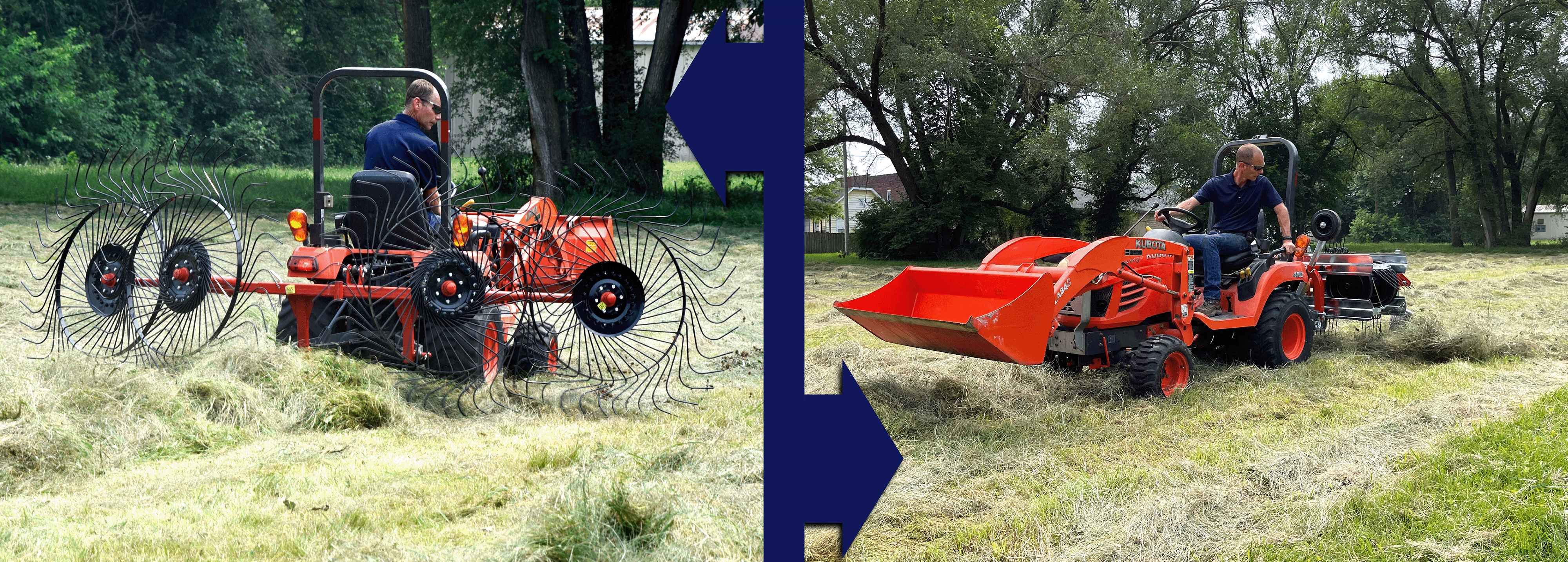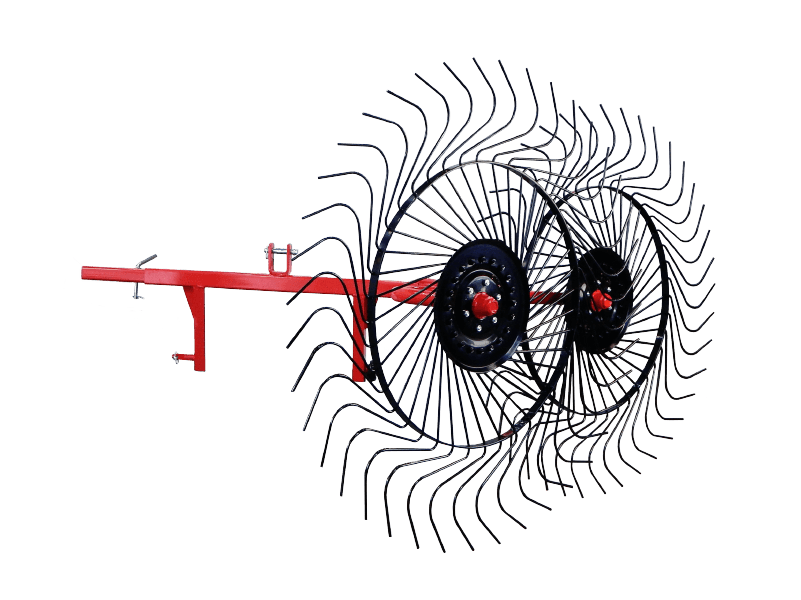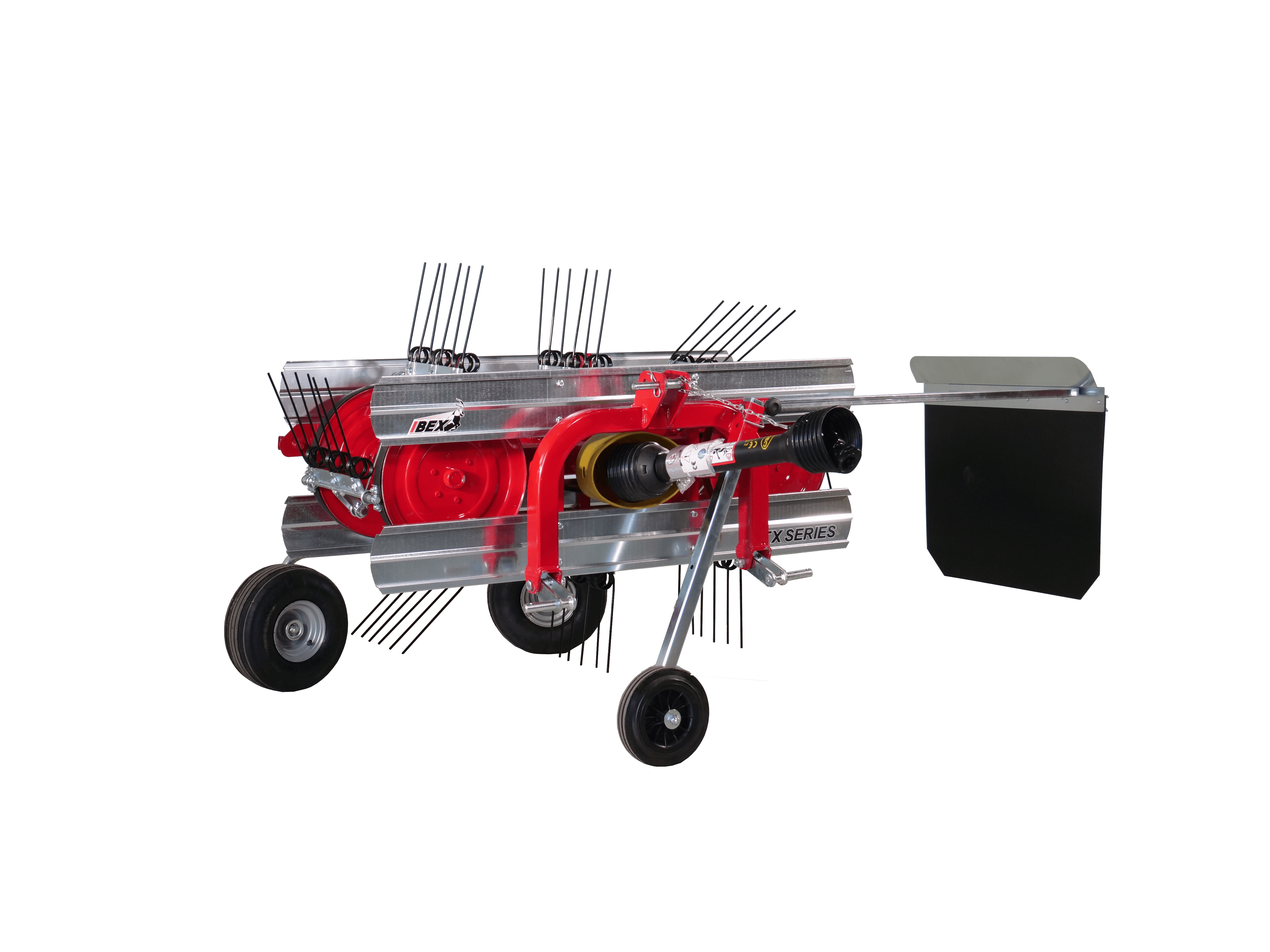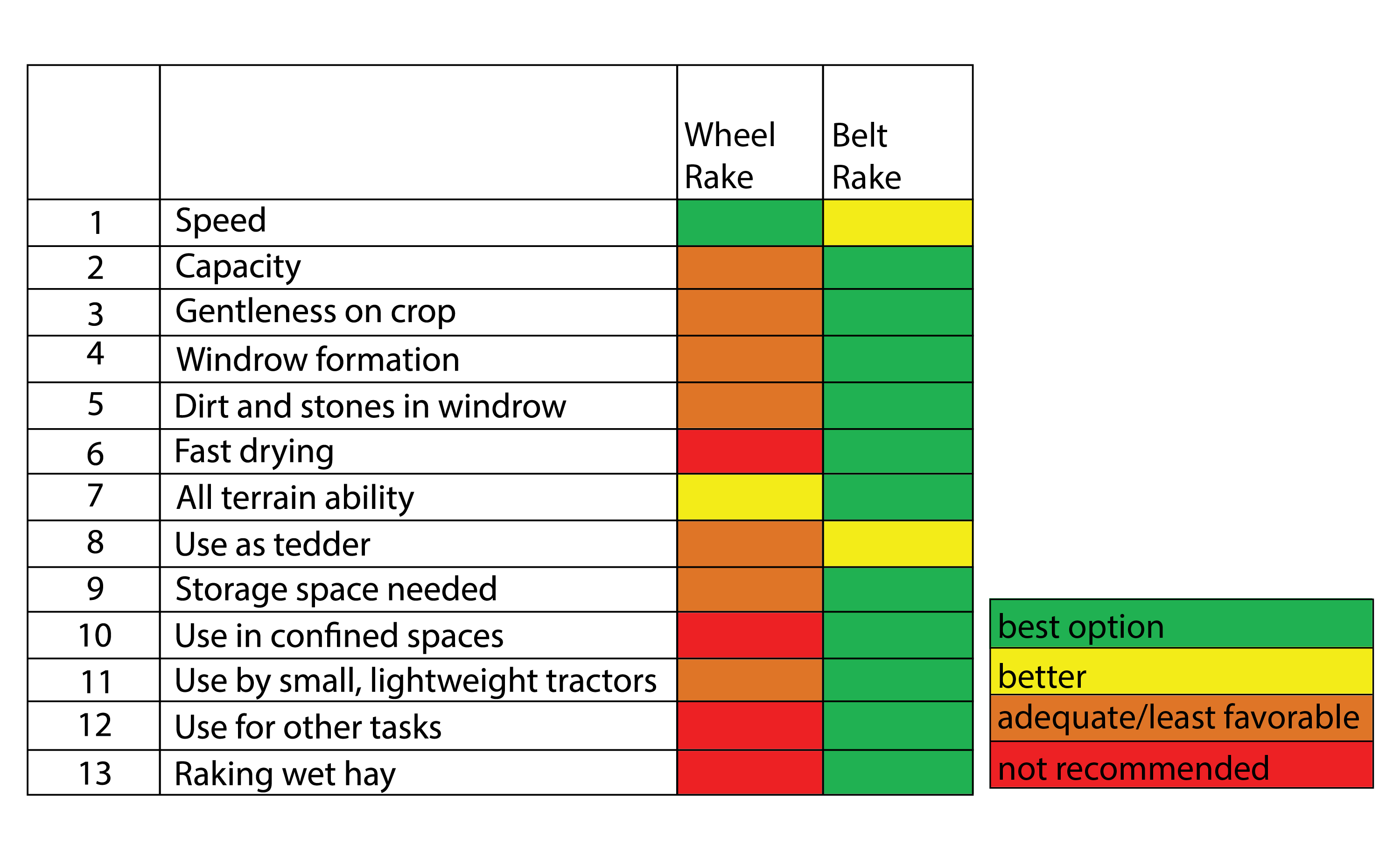Wheel Rake or Belt Rake? The Best Rake for Your Small-Farm Haying Needs

After more than a decade of helping small-farm operators meet their haying needs, Tractor Tools Direct has narrowed down its inventory to two types of hay rakes–wheel rakes and belt rakes. There are several practical reasons for this including these machines’:
- Ease of use
- Ease of maintenance and repair
- Availability of replacement parts
- Ability to be sized to specific farm/tractor requirements
- Affordability
Read on to determine which of these rakes best meets the needs of your small-farm haying operation.
First, what is a hay rake?
A hay rake rakes hay into windrows which are lines of hay that can be more easily picked up by a baler. It is a common misconception that hay can be baled directly from the swath created by the hay mower. There are a few reasons why this will not generally work. First, in most climates, hay will not dry well unless fluffed, flipped, or turned by a tedder and/or rake. Second, the path left by the hay mower will generally not be conducive to pick up by a baler, resulting in a lot of missed hay. Third, you can normally rake at least two mower swaths into one windrow for baling, resulting in fewer passes across the field with the baler and better quality, more consistently dense bales.
Wheel Rakes

Wheel rakes are a great match for small-farm hay production. These rakes are built for speed and productivity when handling dry hay. Wheel rakes are simple machines that require minimal adjustments for proper operation. The economical ground drive simplifies operation and reduces cost. However, its direct contact with the ground can cause dirt and stones to be introduced into the hay, decreasing overall quality.
Wheel rakes are by far the most affordable hay rakes on the market. They can be found in sizes ranging from 2 to as many as 12 wheels making them easy to precisely match to the size of your baler’s intake and tractor’s size and horsepower. Wheel rakes are also the simplest of the rake types to repair and maintain since they do not rely on belts, gears, or motorization.
The windrow created by a wheel rake will not be as light and fluffy as that produced by a belt rake. This means that only minimal drying will occur once the hay has been raked. Also, using a 3-point mounted wheel rake takes some practice, especially if your field has a lot of curves or corners. Furthermore, wheel rakes with 4+ wheels can be physically large, so they can take up a lot of space when stored. Even with these drawbacks, wheel rakes are very popular due to their low cost of purchase and maintenance.
Belt Rakes

Belt rakes are perfectly suited to small-farm hay production. They handle both wet and dry forage and they make a fluffy, consistent windrow. Since the tines do not touch the ground, contamination of the forage by sticks, stones, and debris is greatly reduced. Probably the greatest perk of a belt rake is that it is 2 machines in 1—a rake and a tedder. Going from rake to tedder is as easy as removing the hay stop and making a wheel adjustment, requiring only a few seconds and no tools.
Belt rakes have several other advantages. They are compact in size, making them easy to use and store. Their compactness and lighter weight also make them easy for your tractor to lift, making transport and navigation of rough terrain simple. They are available in a wide range of working widths making them ideal for working in the tight paddocks that are prevalent on small farms.
The belt rake is also simple to use. Because it is so compact and operates directly behind the tractor, the operator spends less time turned around checking to see where the rake actually is. And because it is powered by the tractor PTO, it continues to run while stationary, or when backing up, allowing the operator to use the rake in reverse in tight spaces. It also does a better job around corners and will not pile up hay like a wheel rake when turning. Thus, you will end up with a straighter, fluffier, more consistent windrow that dries better and is easier to follow with a baler. Possibly the only drawback of a belt rake is its higher cost than a wheel rake.
The following chart summarizes the pros and cons of these two rake types and will allow you to determine their best uses:

To learn more about these rakes or to make a purchase, visit https://tractortoolsdirect.com/hay-rakes/ or give us a call at 260-BALE-HAY today!
Recent Posts
-
Boost Pine Straw Production Efficiency with Ibex Mini Round Balers
At Tractor Tools Direct, we're known for our high-quality hay equipment tailored for small farms …Dec 8th 2025 -
How to Winterize Your Tractor: Essential Maintenance Tips to Protect Your Investment
Farm equipment is one of the most valuable investments a farmer can make. At Tractor Tools Direc …Dec 1st 2025 -
Farm Tax ID Explained: Benefits, Eligibility, and How to Apply
As the end of the financial year approaches, it's a great time for small farmer operators to rev …Nov 12th 2025




